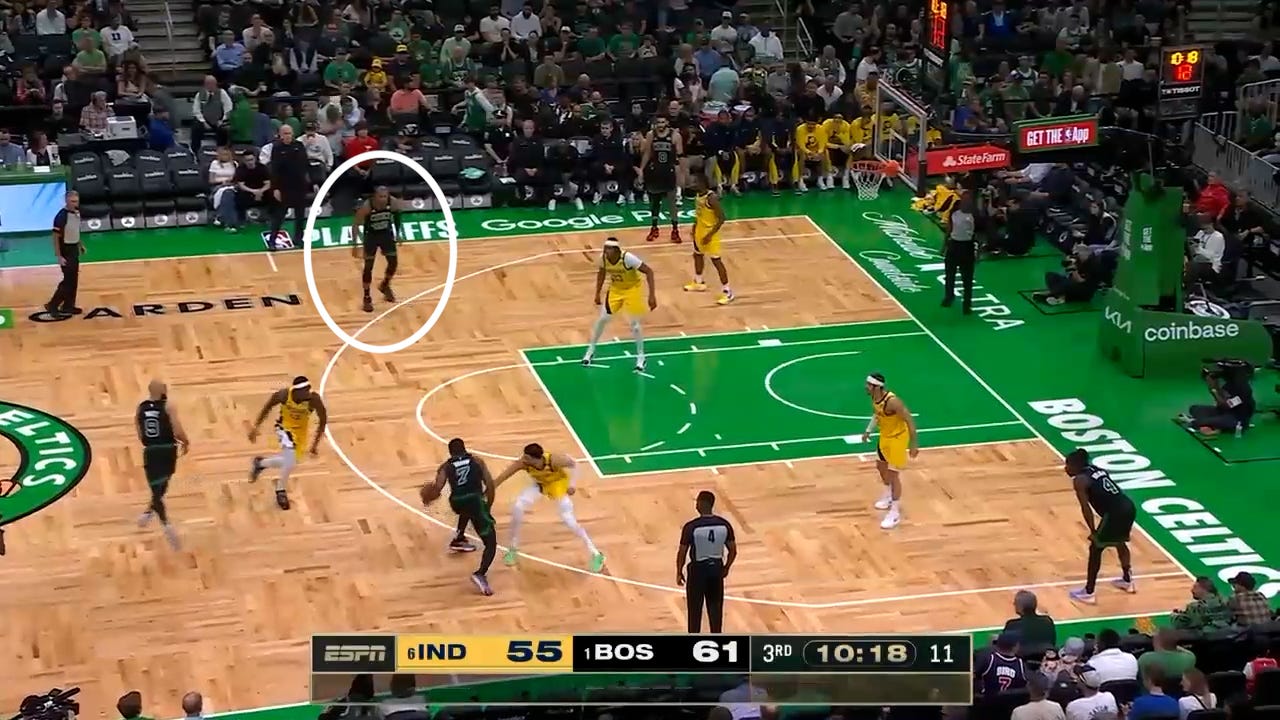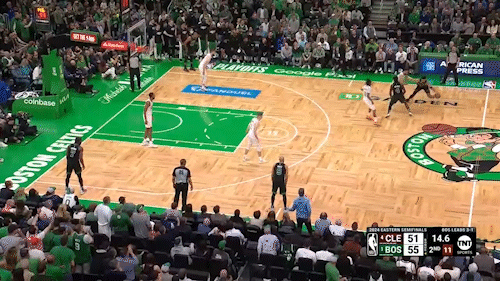The NBA Finals are set with the Boston Celtics facing the Dallas Mavericks in an incredibly fun series that we have the opportunity to dive into a little deeper with the week break we had. In these breakdowns I am going to look at the Celtics Offense/Defense and the Mavs Offense/Defense in 4 separate posts to look at what they have run over the course of the first 3 rounds. After those are complete, we will look at the specific things we have seen over the playoffs and potential ways both teams will counter each other to try and anticipate what might happen in this series.
📝 Playbooks:
2024 Uconn National Champions Playbook | 2024 NCAA Tournament Playbook | NCAA Tournament Bundle (2018-2023)
🏀 Resources:
Basketball Playbooks | Coaching Clinics | Coaching Membership | Newsletter
👉🏻 Follow:
Selling playbooks, creating this newsletter, and my membership site are the way I make a living right now - I am so thankful and appreciative because that is because of you! If you want to support it would be greatly appreciated in any way you can, even a basic follow is helpful.
Right now I am offering a 25% off discount for subscribers for yearly plans, click the link to subscribe!
Latest breakdown on the INSANE series Luka had against the Timberwolves and how no matter what coverage or scheme they tried just didn’t matter:
Guard Guard Ballscreen
The entire Celtics offensive system is based on guard/guard ballscreens to setup their triggers and advantages after it depending on how the other team is guarding them.
The real flexibility of the Celtics offense comes from the ability of Horford (and were presuming health for this) & Porzingis and how they can play either inside or outside. Where they end up on the court can change the help and scheme of the defense as you can see Horford in the dunkers spot low.
When he is spaced out on the wing, his man usually will help on any drives and in this case would take away the stunt or rotation to White on the pop when the Pacers are trying to avoid the switch.
If teams do switch then the Celtics use Tatum/Brown in isolation to attack 1 on 1.
If teams hedge, this creates the advantage for the Celtics that can open up pick and pop 3’s as well as their better playmakers in Jrue & White attacking 4 on 3.
Hunt Ballscreens
The Celtics run “Hunt” ballscreens more than any team in the NBA, where they pinpoint your weakest defender and put them in a ballscreen. One of the ways they do this to make it tougher for the defense is to set a “Ram” screen or a screen down for the ballscreener to give an extra hurdle for the defense to work through.
Throughout these playoffs we have seen them attack Garland, Haliburton, Herro & even Toppin to create scoring chances for their offense.
A great action they will mix in are “Varejao” screens where the player setting the ballscreen with sprint up to one side and then flip the angle of the screen opposite.
This works incredibly well when teams are hedging, as you can see Haliburton here is caught on the wrong side and when Toppin gets screened off it’s an automatic good look for the Celtics.
Tatum As Ballscreener
Using Tatum as a ballscreener is one of the ways the Celtics unlock their offense when teams do not want to switch - in particular empty ballscreens where they can go to 5 different reads out of one basic ballscreen with their best player.
When teams want to keep matchups intact, this allows open driving opportunities for the guard handling and combined with the spacing of Horford or KP the bigs of the other team are usually pulled out defending space and not the rim.
If teams do hedge or show on the screen like Toppin does here then the opportunity for Tatum as the roll man opens up, hitting the pick and pop 3 here.
Tatum can also roll quickly vs the hedge and finish off plays at the rim.
When they show low or do not do a good job of jumping out on the ballhandler, this allows White to punish them with his great 3 point shooting.
When teams start switching this action, he does a great job of attacking the switch with a seal on the high side, keeping his man switched above him for easy scores.
And eventually when the defense does a good job fighting back, it’s pretty much always advantage Tatum in the mid-post.
So many ways to score out of one action, something the Mavericks are definitely making a priority to prepare to defend.
Horns Guards
Another creative way the Celtics use their guards is by using them at the elbows out of Horns and putting Horford in the corner spaced. This opens up the playbook even more, as seen here by Tatum screening across and then slipping the pick to find Horford for the layup.
When teams press up against this action, now the players at the elbow can attack with little or no help.
The Celtics love to hit a player like Brown at the elbow and then use Tatum as a screener setting a backscreen.
When the backscreen is covered it ends up in an ISO in the middle of the floor, hard to double and after defending the initial ballscreen with either a switch or honoring it by sagging just a touch - Tatum is usually open around the nail.
If the elbows are being jammed, this can turn into “Twist” ballscreen action with both player screening in guard/guard action.
Wide
I have covered the NBA’s Wide Series extensively for the past 3 years in breakdowns, so I won’t dive too deep into what the history of it is, but basically it started off as setting a screen in the middle of the floor looking for a shooter.
The Celtics use their flexibility again and set these screens for Horford and Porzingis, something NBA centers are not used to defending.
One of the actions they flow into after a big screens away is flashing them to the elbow and then going into split cuts or flare screens off of it.
Wide Fist
A variation of the Spurs “Wedge Roll” the Celtics start off the basic Wide action but then have Tatum/Brown go into a guard/guard ballscreen.
This also opens up opportunities for slips and dives to the rim with the big usually popping to the 3 point line and taking help defense away with guards in the corners.
Stack Tatum
A special that the Celtics will run for Tatum in ATO situations and to get him the ball is “Stack” where he starts around the free throw line and can cut off either side of Horford to receive the ball.
Horford then chases into a ballscreen, so instead of a stagnant pick and roll this gives Tatum a live dribble off the catch with slightly more movement.
They also combine this initial action with a “Ram” screen or a downscreen for the big to make the coverage even more difficult for bigs in ballscreen defense.
Combining the actions we saw above, they have Tatum come off the Stack action and then hunt players they are trying to get switched, as here we can see them go after Herro.
Here they go after Garland on Cleveland.
Flare Brown
To get Brown going they like to have him come off Flare screens in multiple setups. Their favorite ATO this postseason has been to go to an empty ballscreen with guards and then have Jrue set a flare screen for Brown.
With the one side of the floor empty, this opens up slips and easy post entries with the help defense not able to load up low.
They also use him as the initial ballscreener out of Horns and then have him come off the flare screen from the big - a common set in today’s NBA.
A pretty cool action they disguise is to set a guard/guard ballscreen on one side of the floor and then pop him to the wing. Then the opposite wing looks for Flare/Slip action - something they tried to counter switching with and have Horford spaced in the corner.
I hope you enjoyed this breakdown and showcased some of what the Celtics will try and do on offense in the NBA Finals, if you want to support please consider subscribing, liking or following!
Thanks,
Coach Pyper



































